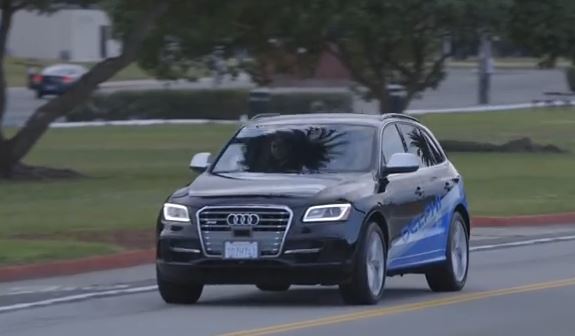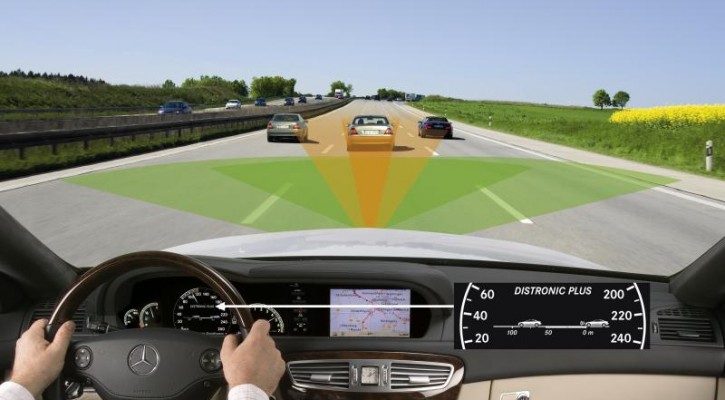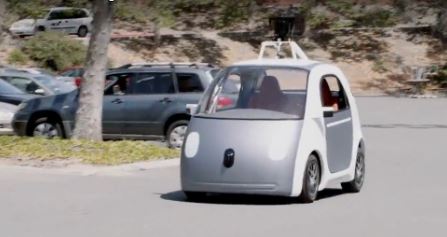Tag Archive: automotive technology

Autonomous Car Travels Across US
April 7, 2015
In the first trip of its kind, an autonomous car recently completed a cross country trip from California to New York. The Audi SQ5, modified by Delphi, an automotive supplier, set the record for autonomous vehicles by traveling 3.400 miles in nine days.
While Google and others have been openly developing autonomous vehicles, for several years, Delphi had been developing theirs under the radar. Unlike Google, who has plans to build their own autonomous car, Delphi, who manufactures parts for cars, is hoping to develop a system that can fit into any production model.
The trip was designed more for gathering data on the capabilities of their autonomous system and the engineers said they gathered nearly three terabytes of data on the trip. However, the journey also served as a marketing tool because the destination was the New York International Auto Show where they hoped to showcase the vehicle.
Delphi’s autonomous car differed from the Google vehicle in that it doesn’t have a spinning radar mounted on top of the vehicle. Instead, it used Lidar (laser radar) along with long range and short range radar and cameras embedded throughout the vehicle to watch for hazards and maintain a safe distance from other vehicles. The system was designed to fit seamlessly into a vehicle without any of the obvious features of an autonomous car.
The trip was limited to daytime driving and engineers were on board to take over driving if necessary. The engineers did, in fact, take over driving duties in heavy rush hour traffic for the sake of safety. In spite of the engineers taking control at times, Delphi says that the vehicle completed 99 percent of the trip on its own.
The autonomous system is designed, in the words of the engineers, to be boring. The system doesn’t allow the vehicle to speed, it always maintains a safe distance from other vehicles, and merges smoothly from freeway on-ramps into traffic. Although the system doesn’t currently allow right turns on red, that can be changed in the future. A few bugs still have to be worked out. The engineers say that the system has a hard time recognizing something as low and subtle as a speed bump.
Delphi’s system could lead to the introduction of autonomous car systems even earlier than predicted. Unlike the Google car, which has never ventured outside of California, the Delphi system doesn’t rely on Google maps for directions; instead it depends on the cameras and Lidar to allow it to travel on any road under almost any condition.
Read more: We’ve reached our destination!
Image: Courtesy of Delphi Automotive

Driver Behavior VS Technology
September 24, 2014
Ignoring driver behavior in favor of technology is killing people according to an an editorial that is going viral on news websites. Leonard Evans, president of Science Serving Society writes that the US is failing in its efforts to prevent motor vehicle deaths because of its focus on the wrong area of automotive safety.
In his editorial, Dr. Evans cites the difference in traffic death rates between the US and other industrialized nations. Since the highest recorded highway death rates in 1972, the US traffic death rate has fallen by 41 percent however, during the same period, the Netherlands and Germany’s traffic fatality rates have fallen by 81 percent and Great Britain’s fell by 76 percent.
The difference between the US and the other top performing industrialized countries is the US reliance on technology to improve survival rates during a crash. Rather than relying on technology alone, the other top performing nations worked hard to prevent crashes altogether by changing driver behavior through a combined use of technology and enforcement of sensible traffic laws. Read more: U.S. traffic safety misleads the public

The Drivers Of This Car Really Can’t Afford To Be Distracted
June 25, 2014
Researchers in Germany are working on a system that allows drivers to control a car with their minds. In tests using the system, test subjects “drive” at speeds up to 30 mph with their hands in their laps, braking and making turns with their thoughts alone. If developed, this system could allow a new source of freedom to the disabled but there’s no place for a distracted driver behind the wheel. Read more: Mind-control: ‘I drove a car with my thoughts’

Collision-Avoidance Technology Will Fundamentally Change Auto Industry
June 4, 2014
Until now, automotive safety technology has primarily focused on protecting the occupants inside a vehicle in the event of a crash but, with new collision-avoidance technology, the focus is changing to avoid the crash altogether. This technology won’t only affect the vehicle but also the industry that has built up around motor vehicle crashes. Will insurance, lawyers, and body shops no longer be needed? Read more: Who Needs Auto Insurance?
Photo compliments of Daimler.com

Google Unveils Its Own Car: There’s No Steering Wheel Or Brake
May 28, 2014
Google has been at the forefront in driverless car technology using specially adapted Toyotas to test its technology. They recently unveiled their own design for a driverless car that has no steering wheel or brake pedal, just two buttons. Read more: Google’s new driverless car has no brakes or steering wheel
Photo courtesy of Google
